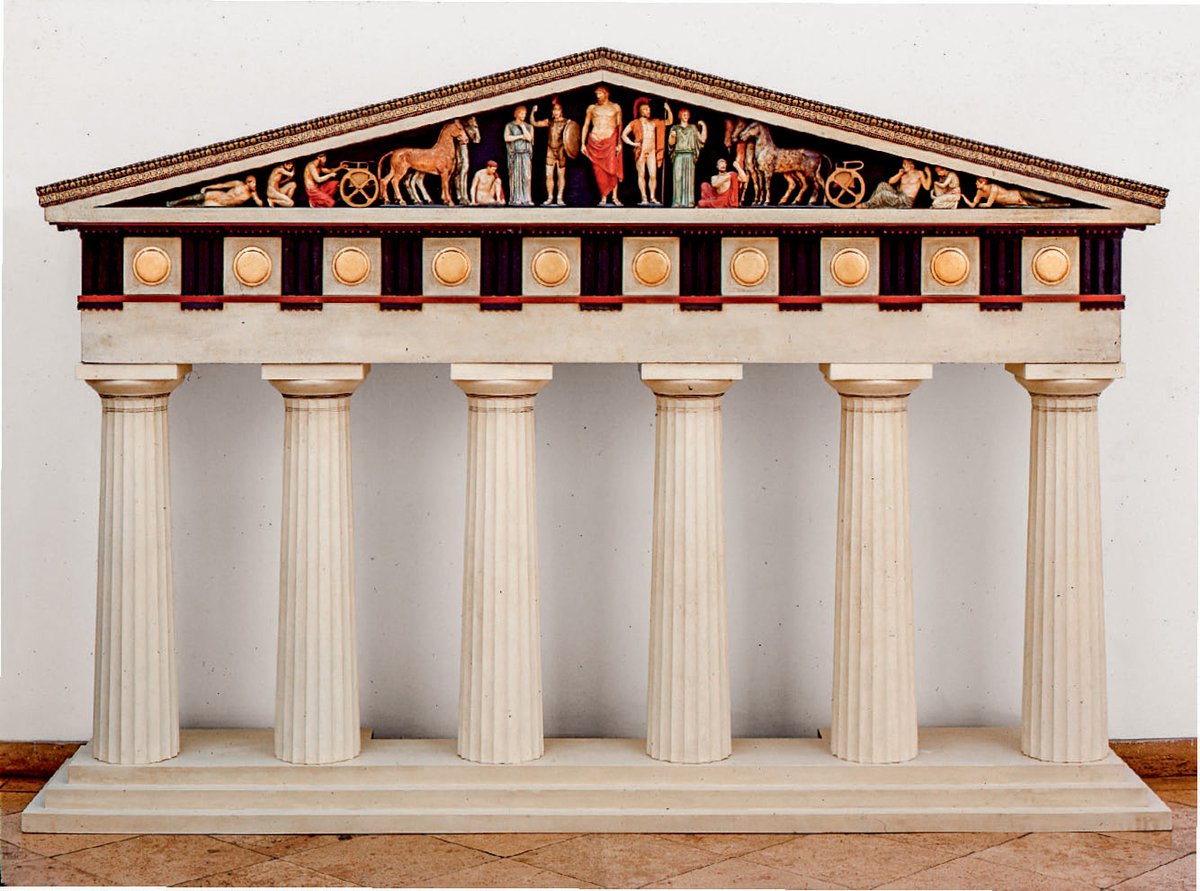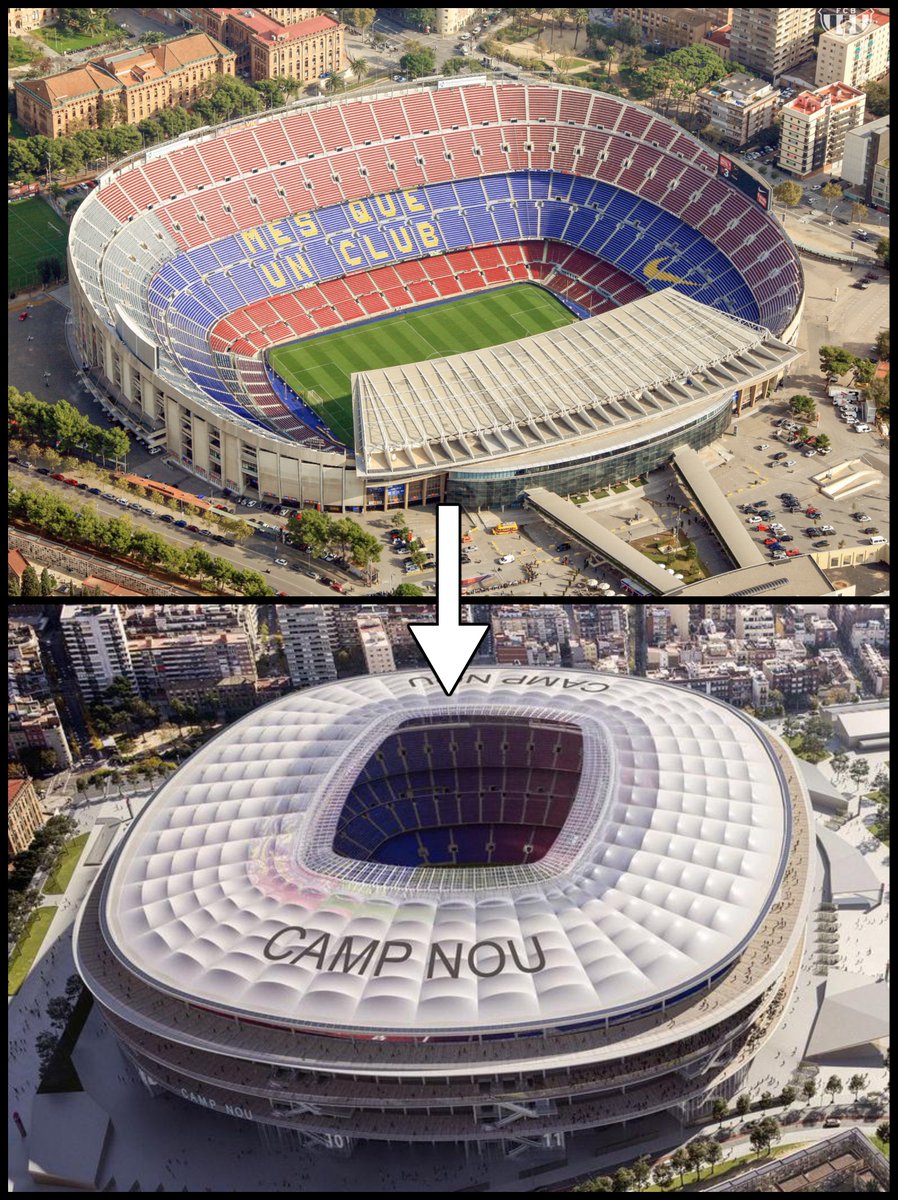Ancient sculptures were painted with bright colours.
To Greeks or Romans a plain marble statue would have looked unfinished...
To Greeks or Romans a plain marble statue would have looked unfinished...

What do you imagine when you think of an Ancient Greek or Roman statue?
Something like the Diadoumenos of Polykleitos, one of the great Athenian sculptors of the 5th century BC.
Or one of the many statues of Roman Emperors, like when Commodus had himself portrayed as Hercules.


Something like the Diadoumenos of Polykleitos, one of the great Athenian sculptors of the 5th century BC.
Or one of the many statues of Roman Emperors, like when Commodus had himself portrayed as Hercules.


In both cases you imagine a statue sculpted from marble, and you admire the skill of the artist in rendering stone so lifelike.
And, perhaps, the purity of the white marble seems like an integral element, a defining characteristic, of these ancient sculptures.
And, perhaps, the purity of the white marble seems like an integral element, a defining characteristic, of these ancient sculptures.

The Ancient Greeks used Parian or Pentelic Marble for their statues, and the Romans quarried it from a place in northern Italy called Carrara.
Parian and Carrara Marble are both famed for their quality — white as snow and purer than daylight.
Parian and Carrara Marble are both famed for their quality — white as snow and purer than daylight.

And that is how ancient statues looked to people throughout the Middle Ages and Renaissance, over one thousand years later.
So when a sculptor like Donatello, at the beginning of the Renaissance, decided to sculpt like the ancients had done, he also used pure, plain marble.
So when a sculptor like Donatello, at the beginning of the Renaissance, decided to sculpt like the ancients had done, he also used pure, plain marble.

This precedent was followed by the likes of Michelangelo in the 16th century and Bernini in the 17th century, as they learned to master marble and — some would say — sculpt it even better than the Greek and Roman masters of old.




The Renaissance was all about resurrecting the culture of the Classical World — of Athens and Rome — and these modern marble statues epitomised that.
This continued for centuries, as with this 1832 statue of George Washington as a classical hero:
This continued for centuries, as with this 1832 statue of George Washington as a classical hero:

But in the 19th century some archaeologists and classicists started to argue that ancient statues had actually been painted — they discovered artefacts with apparent traces of colour.
And, since then, technology has vastly improved our ability to detect them.
And, since then, technology has vastly improved our ability to detect them.

There were historical references too, like this line from Euripides' 412 BC play, Helen:
"If only I could shed my beauty and assume an uglier aspect, the way you would wipe color off a statue."
Lucian, over 600 years later, also referenced the painting of statues.
"If only I could shed my beauty and assume an uglier aspect, the way you would wipe color off a statue."
Lucian, over 600 years later, also referenced the painting of statues.

And not only statues.
Greek and Roman temples were decorated with friezes — sculptures carved into walls — and rather than being left as pure stone, it seems they were covered with polychromy (bright, varied colours).
This model of the Temple of Zeus was made in 1886:
Greek and Roman temples were decorated with friezes — sculptures carved into walls — and rather than being left as pure stone, it seems they were covered with polychromy (bright, varied colours).
This model of the Temple of Zeus was made in 1886:

Inspired by these new theories and discoveries, the 19th century artist Lawrence Alma-Tadema imagined what the famous Parthenon marbles, sculpted by Phidias at Athens, might have originally looked like.
Rather different to how they are known today.
Rather different to how they are known today.

This was controversial; people were attached to the beauty of pure marble, and accepting that they had once been painted seemed to undermine centuries of scholarship about Greek and Roman civilisation.
It was hard to believe that the ancient world had once been so colourful...
It was hard to believe that the ancient world had once been so colourful...

But the truth was that the paint had simply worn off over the centuries.
And so, during the Renaissance, artists and scholars mistakenly but understandably took ancient statues as they found them — unpainted — and assumed that was how they had always been.
And so, during the Renaissance, artists and scholars mistakenly but understandably took ancient statues as they found them — unpainted — and assumed that was how they had always been.

Still, even if we know that ancient statues were painted, there remains a debate about precisely how they were painted, with what colours, to what extent, and how widespread it was.
Some attempted reconstructions seem rather rudimentary, if not outright ridiculous.
Some attempted reconstructions seem rather rudimentary, if not outright ridiculous.

If we look at ancient art — of which little remains in comparison with sculpture — we can see that these artists clearly had the skill to paint in a very lifelike way. Perspective, shading, modelling, colour; they could do it all.
Perhaps their statues were painted equally well.



Perhaps their statues were painted equally well.



It is only because so many sculptures have survived that we think of Greek and Roman art as having been dominated by statues, and that this was their highest form of art.
But it was painters like Zeuxis and Apelles who were regarded as the greatest artists of their age.
But it was painters like Zeuxis and Apelles who were regarded as the greatest artists of their age.
In which case, these ancient painters being so highly skilled, a certain statue — if it was originally painted — would presumably have looked a little less gaudy than this... 

None of this means that the sculptures of Donatello, Michelangelo, and Bernini are *wrong* — clearly, as an art form, the use of pure and unpainted marble is legitimate.
But to a Greek or a Roman these sculptures would simply look unfinished — and rather ugly!
But to a Greek or a Roman these sculptures would simply look unfinished — and rather ugly!

Perhaps it was a happy accident.
Had they been painting sculptures during the Renaissance, true to the classical world, then maybe Michelangelo or Bernini wouldn't have put quite so much effort into their treatment of the marble itself.


Had they been painting sculptures during the Renaissance, true to the classical world, then maybe Michelangelo or Bernini wouldn't have put quite so much effort into their treatment of the marble itself.


Alas, it begs the question of in how many other ways we misunderstand the past and imagine it in the wrong way — and what the consequences of these misapprehensions are.
And, by extension, how historians and artists of the future might misunderstand the 21st century...
And, by extension, how historians and artists of the future might misunderstand the 21st century...

• • •
Missing some Tweet in this thread? You can try to
force a refresh





















